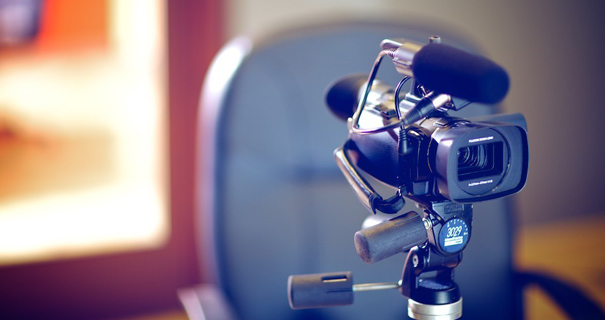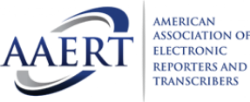Why Trial Presentations Are Key for Effective Cross-Examination in Court
Why Trial Presentations Are Key for Effective Cross-Examination in Court
Blog Article
Why Solid Test Presentations Are Secret to Lawful Success
The relevance of solid trial presentations can not be overemphasized in the realm of legal practice. These presentations serve as the main automobile for sharing disagreements and proof, essentially shaping juror perceptions and influencing their decision-making processes. A well-crafted story, improved by critical aesthetic aids and emotional engagement, cultivates a profound link with jurors, ultimately impacting their understanding of the case. Nevertheless, the nuances of successfully adapting these discussions to diverse juror backgrounds present intricacies that merit additional exploration, particularly in the context of achieving desirable end results in trials.
Importance of Efficient Communication
Effective interaction is paramount in a legal setup, as it acts as the channel through which disagreements, proof, and legal concepts are conveyed to courts and juries. trial presentations. Clear articulation of realities and legal criteria permits for a convincing presentation that can dramatically affect the decision-making procedure.
Moreover, efficient interaction promotes connection and count on in between lawyers and their customers, enhancing cooperation and making sure that all parties are lined up in their objectives. It additionally plays a vital function in court choice and engagement, where the capacity to get in touch with jurors can influence their receptiveness to the case. Additionally, non-verbal interaction, such as body language and eye get in touch with, adds to the general impression an attorney makes, strengthening verbal messages.
Inevitably, mastering reliable interaction can bring about a more engaging and meaningful discussion, enhancing the probability of a beneficial judgment. Thus, lawyers have to focus on refining their interaction skills as a foundation of their test preparation and strategy.

Crafting an Engaging Story
Reliable communication prepares for crafting a compelling narrative in legal trials. A well-structured narrative not just involves the court yet additionally makes clear complex legal issues. The goal is to present the facts in a manner that resonates mentally and rationally with the audience, enabling them to comprehend the situation from the client's point of view.
To accomplish this, attorneys must determine the main style or message of the instance, which functions as the foundation of the story. Each item of proof and witness testament need to be woven into this style, strengthening it rather than diminishing it. This creates a cohesive story that is very easy for the court to comply with.
Additionally, making use of relatable characters-- be it the plaintiff, defendant, or key witnesses-- can humanize the instance, making it extra remarkable. Attorneys should also take into consideration the pacing of their story, making sure that defining moments are highlighted and that the story unravels in a sensible development.
Eventually, a compelling story changes the presentation of facts into a persuasive debate, assisting the jury toward a beneficial conclusion while ensuring that the complexities of the lawful system remain obtainable and easy to understand.
Making Use Of Aesthetic Aids
Visual help play an essential role in boosting the understanding and retention of details throughout legal tests. By presenting complex data and arguments aesthetically, lawyers can streamline elaborate details, making them a lot more obtainable to jurors. Graphes, graphs, and images can effectively highlight essential factors, enabling jurors to comprehend important realities quickly.
Using aesthetic aids not only help in quality however additionally involves the audience's interest. Jurors are more probable to bear in mind information provided aesthetically than through verbal descriptions alone. Demonstrating timelines via visual representations can make clear the sequence of events, aiding jurors comprehend the context of the instance.
Moreover, aesthetic help can assist to highlight differences in evidence, making them much more obvious. When used purposefully, they can underscore the strength of the her response disagreement or reveal weaknesses in the opposing side's instance. trial presentations. Making use of technology, such as interactive discussions or computer animations, can even more improve interaction and understanding
Involving the Court Mentally
Commonly, successful trial presentations need greater than simply logical arguments and accurate proof; they should additionally reverberate on a psychological degree with jurors. Involving the jury emotionally can substantially influence their perception of the situation and their best judgment. By crafting a narrative that humanizes the celebrations involved, attorneys can produce a psychological link that encourages jurors to understand with the customers' experiences.
To attain this, attorneys must concentrate on storytelling methods that highlight the individual risks and real-life ramifications of the situation. This may include sharing poignant stories or using powerful visuals that evoke sensations of empathy, anger, or sadness. Such components can assist jurors see beyond the lawful intricacies and comprehend the human dimensions of the situation.
In addition, the usage of tone, body language, and eye get in touch with throughout the presentation can additionally improve psychological interaction. Thus, psychological involvement is a critical part navigate to this site of a compelling test discussion.
Adjusting to Audience Assumptions
Comprehending the assumptions of the jury is crucial for a successful trial presentation. Jurors featured presumptions influenced by individual experiences and social narratives, which can considerably influence their decision-making. As such, tailoring your presentation to line up with these assumptions can boost your persuasive power.

Furthermore, establishing credibility is critical. Jurors anticipate lawyers to present evidence and debates that are not just compelling but also morally sound - trial presentations. This consists of being transparent concerning the staminas and weaknesses of your instance, which promotes count on and respect
Last but not least, expect jurors' inquiries and worries. Dealing with possible questions proactively demonstrates an understanding of their viewpoint and a commitment to clearness. By adapting your discussion to meet target market assumptions, you create a more engaging narrative, eventually enhancing the opportunities of a positive verdict.

Conclusion
In conclusion, solid trial presentations are extremely important to attaining legal success. Mastering the art of trial discussion is vital for lawful practitioners aiming read the full info here to secure positive outcomes.
Report this page